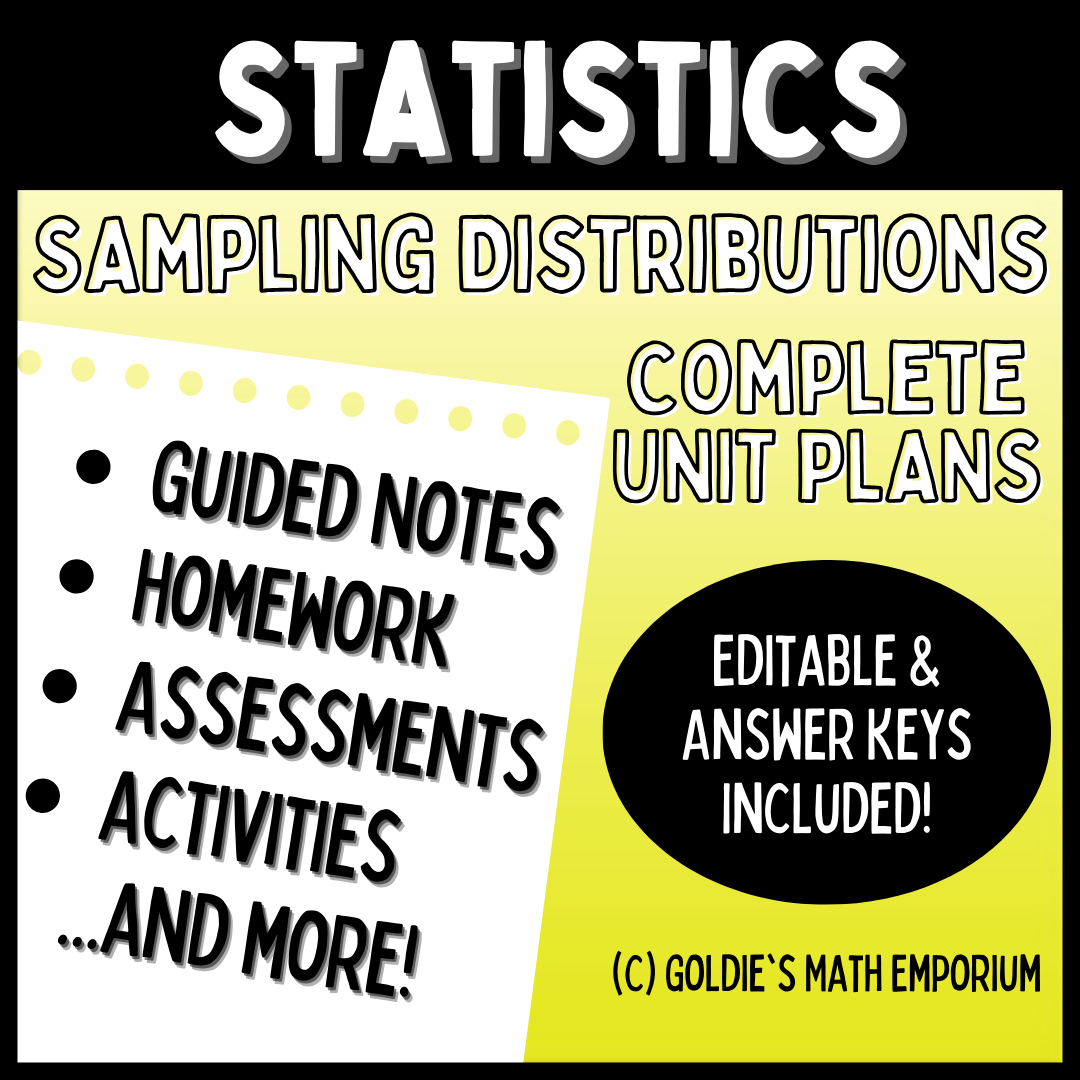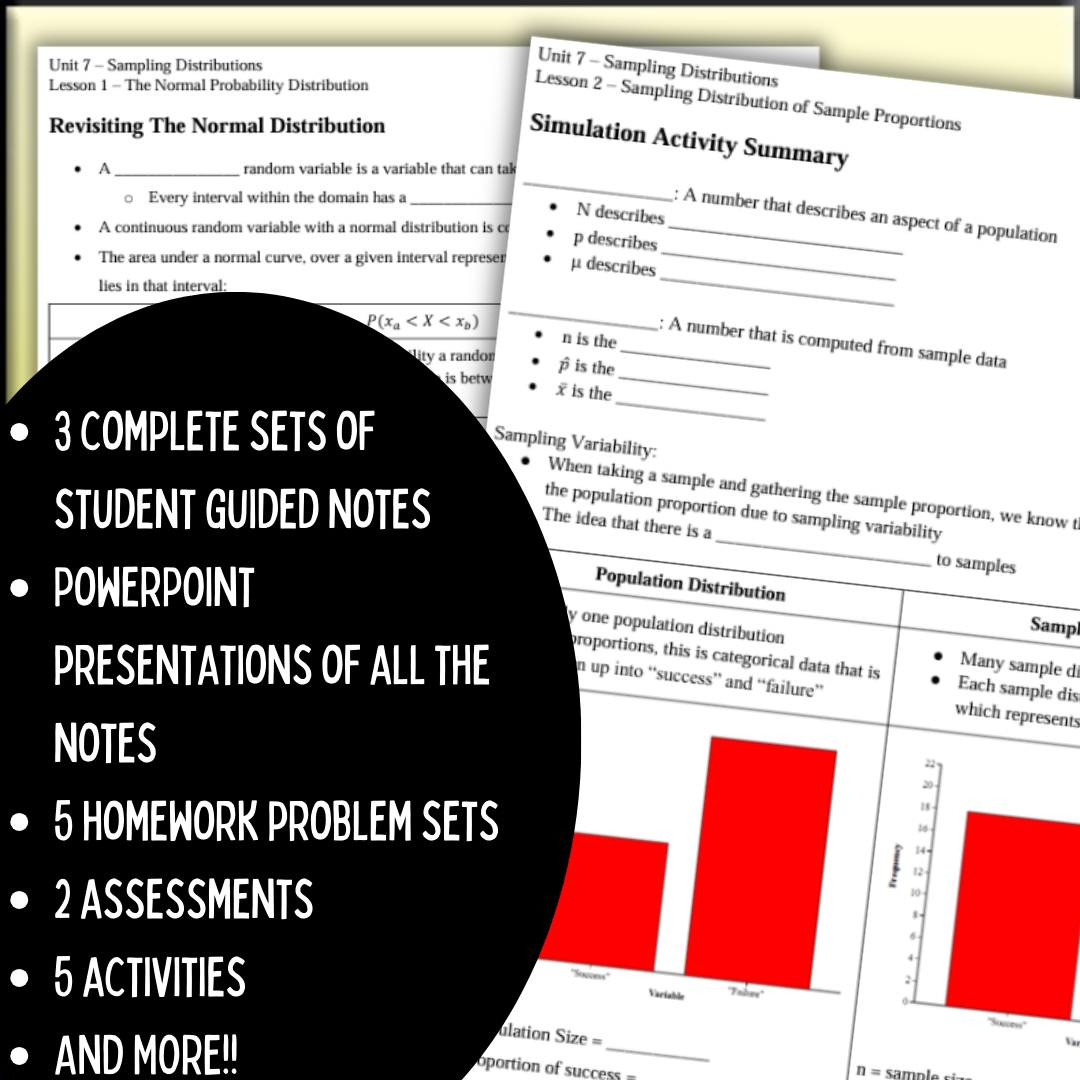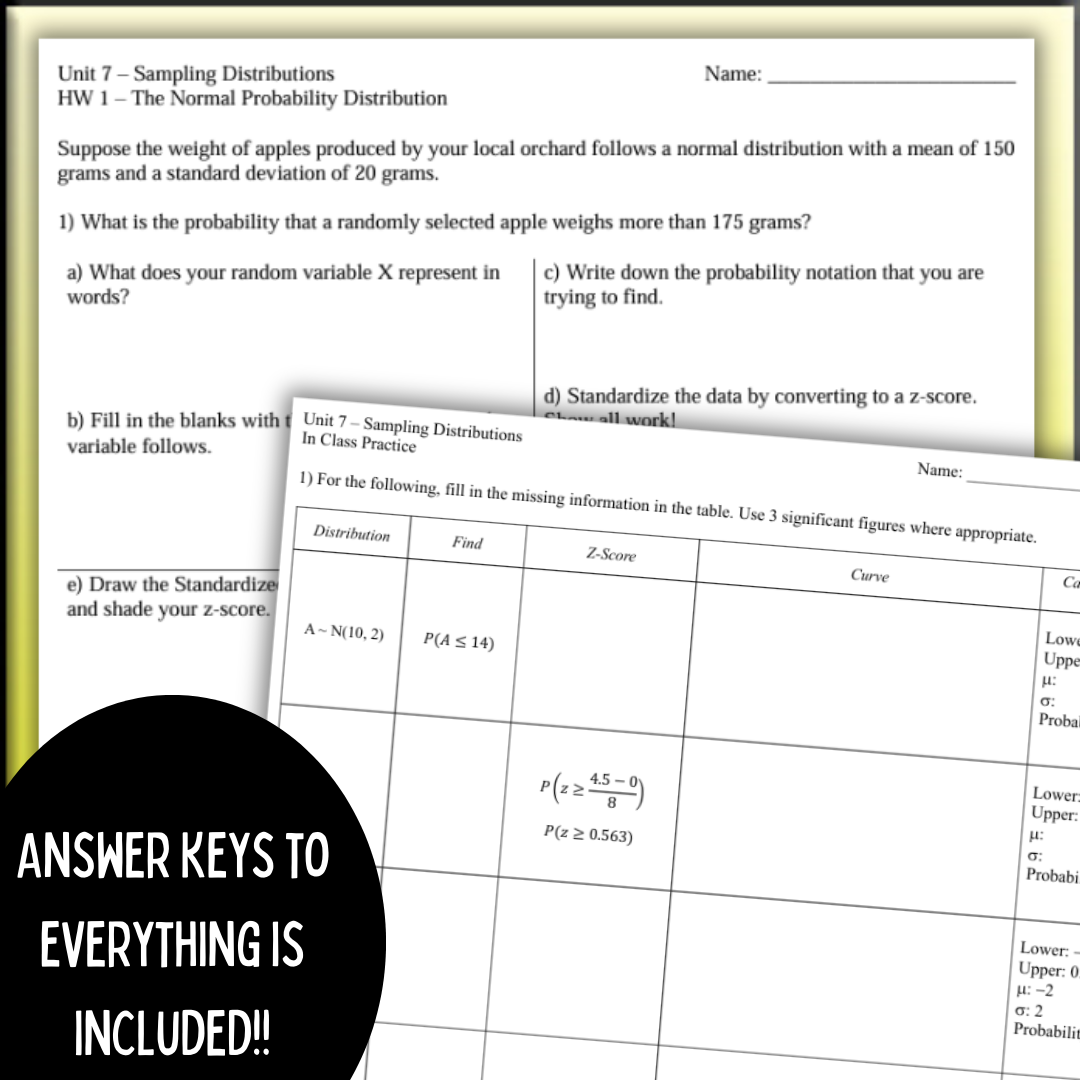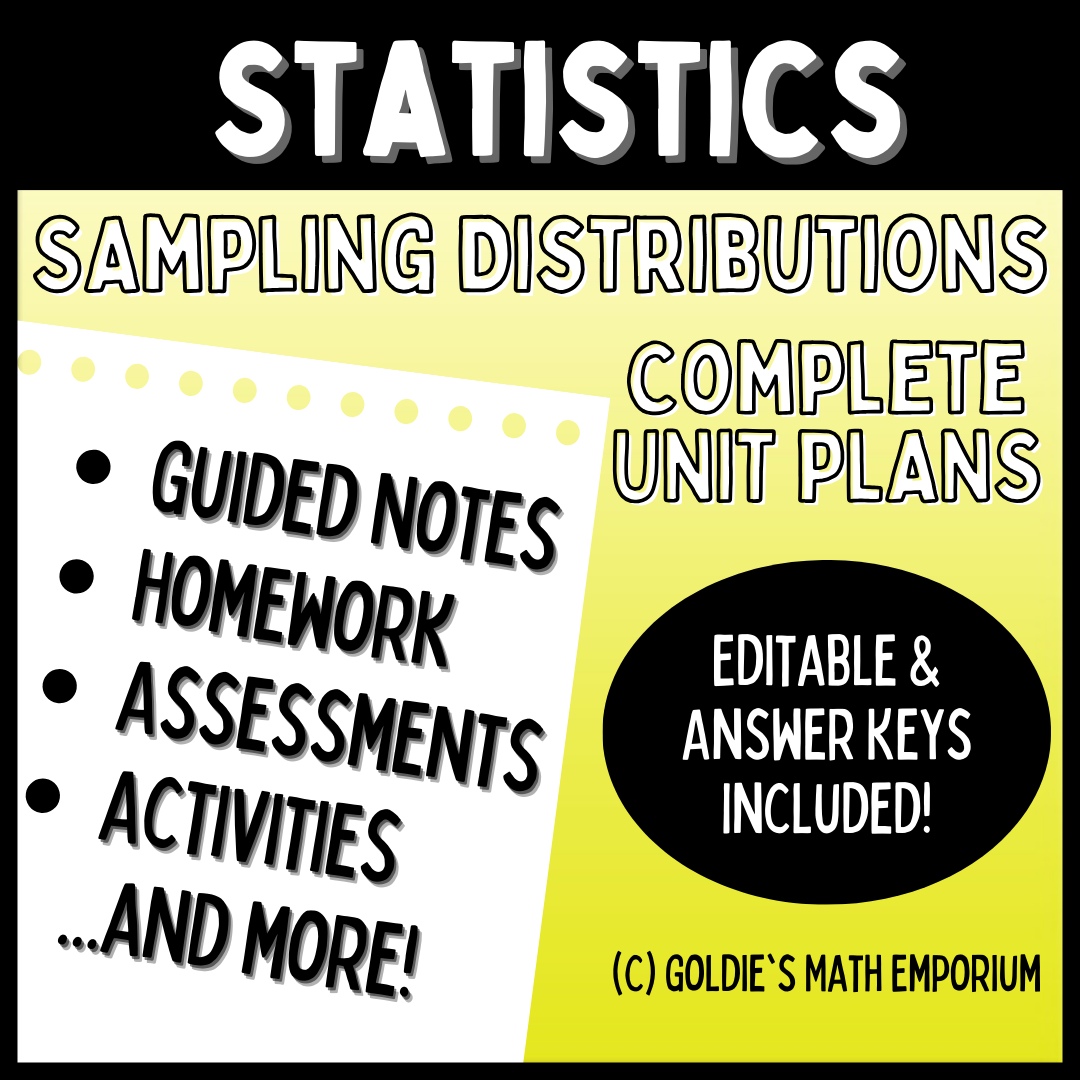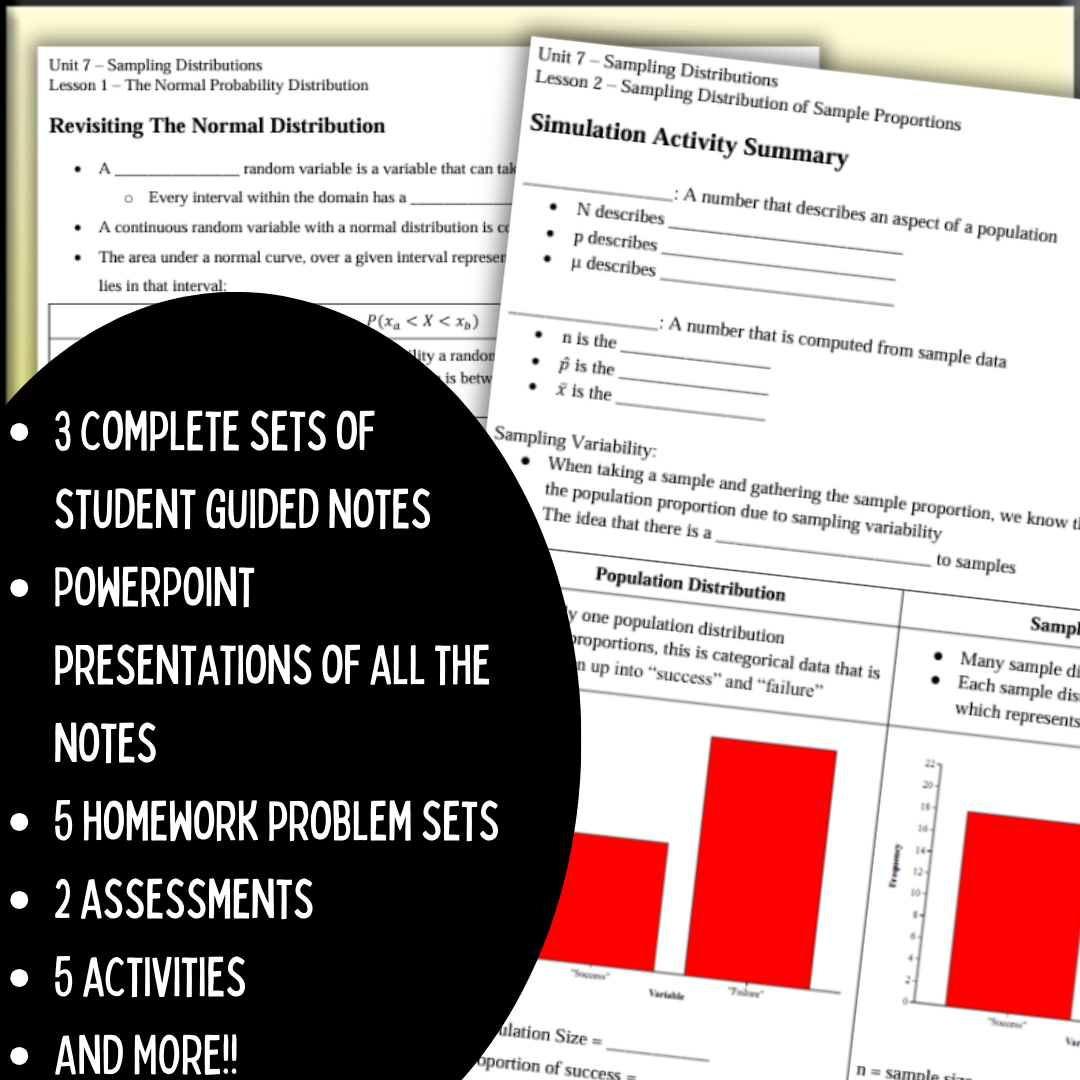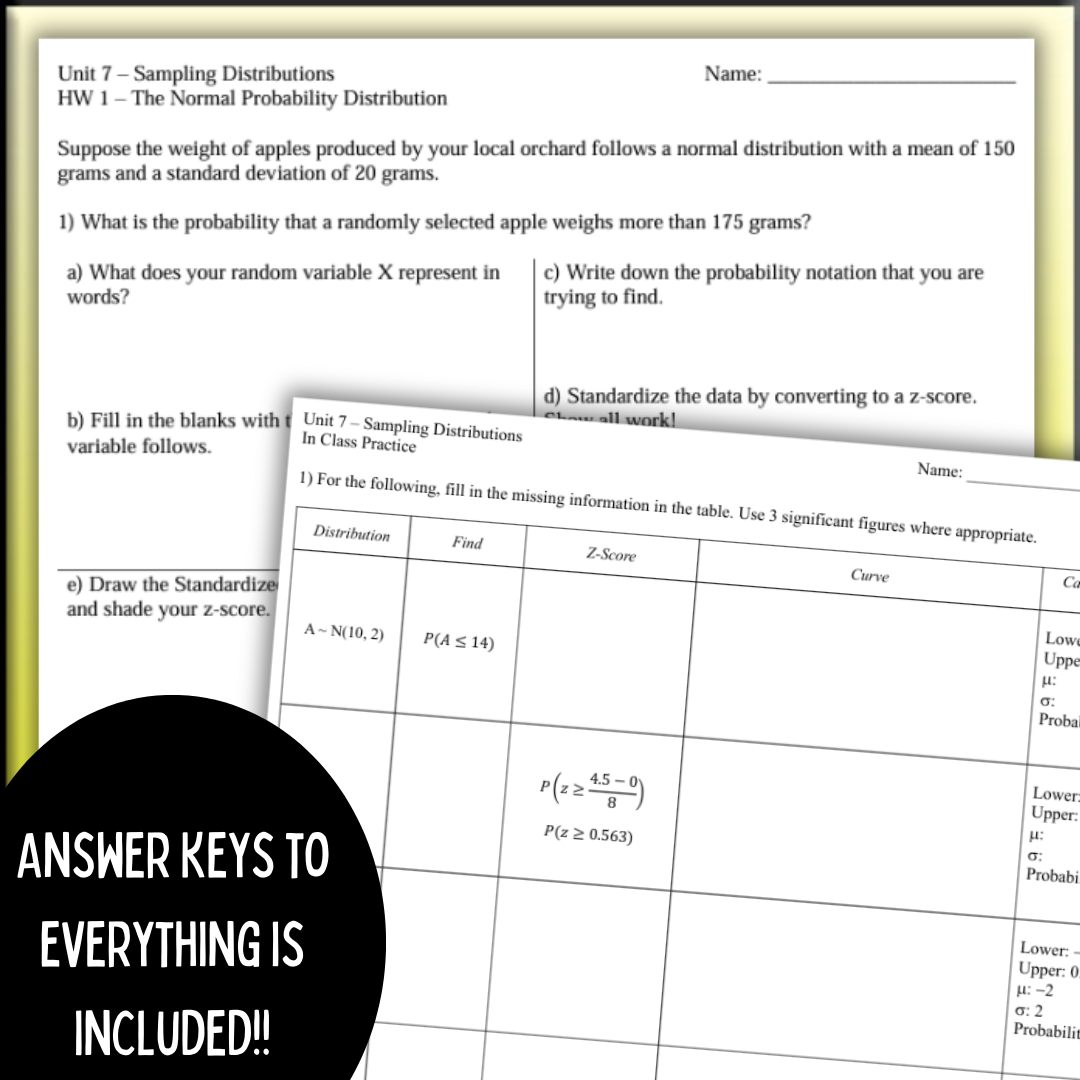Goldie's Math Emporium
Statistics: Sampling Distributions
Statistics: Sampling Distributions
Couldn't load pickup availability
Statistics
Unit 7: Sampling Distributions
This complete unit bundle teaches students all about the normal probability distribution, the sampling distribution for a sample proportion, the Central Limit Theorem, and the sampling distribution for a sample mean.
Included in this resource:
- 3 complete sets of student guided notes
- PowerPoint presentations of all the notes for easy and seamless class instruction
- 5 homework problem sets + complete test review
- 2 assessments – quiz and test
- An in-class review lesson with handouts and a PowerPoint
- 5 activities
- Suggested pacing and learning targets
All of the resources are 100% editable, to modify to fit your classroom needs. The zip folder includes the Word document, which you have permission to edit completely. The PDF version and answer keys are included for your convenience.
I teach this course without a textbook, so everything that is provided here, can be used without supplementation.
The student-friendly learning targets for this unit are:
- Students will calculate the probability that a particular value lies in a given interval of a normal distribution and determine the interval associated with a given probability (area) in a normal distribution.
- Students will estimate sampling distributions using simulations and calculate and explain unbiased estimators for a population parameter.
- Students will calculate and interpret parameters, check appropriate conditions, and calculate and interpret probabilities of a sampling distribution for sample proportions.
- Students will calculate and interpret parameters, check appropriate conditions, and calculate and interpret probabilities of a sampling distribution for sample means.
Common Core Math Standards Covered:
- S-ID.1: Represent data with plots on the real number line (dot plots, histograms, and box plots).
- S-ID.2: Use statistics appropriate to the shape of the data distribution to compare center (median, mean) and spread (interquartile range, standard deviation or two more different data sets.
- S-ID.4: Use the mean and standard deviation of a data set to fit it to a normal distribution and to estimate population percentages. Recognize that there are data sets for which such a procedure is not appropriate. Use calculators, spreadsheets, and tables to estimate areas under the normal curve.
- S-IC.1: Understand statistics as a process for making inferences about population parameters based on a random sample from that population.
- S-IC.2: Decide if a specified model is consistent with results from a given data-generating process, e.g., using simulation.
Goldie's Curriculums:
- Statistics: The Complete Curriculum Bundle (Units 1 – 11)
- Statistics: Semester 1 Curriculum Bundle (Units 1 – 6)
- Statistics: Semester 2 Curriculum Bundle (Units 7 – 11)
Goldie's Individual Units:
- Unit 1 – One-Variable Data
- Unit 2 – The Normal Distribution
- Unit 3 – Two-Variable Data
- Unit 4 – Collecting Data
- Unit 5 – Probability
- Unit 6 – Random Variables
- Unit 7 – Sampling Distributions
- Unit 8 – Confidence Intervals
- Unit 9 – Hypothesis Testing
- Unit 10 – Comparing Two Populations
- Unit 11 – Chi-Square Distributions
Goldie's Individual Resources:
- Statistics Semester 1 Assessment Bundle
- Statistics Semester 2 Assessment Bundle
- M&M Statistics Activity Bundle
- Statistics: Semester 1 Final Exam and Study Guide
- Statistics: Semester 2 Final Exam and Study Guide
If you need extra explanations or additional guidance, I would love to help!! Contact me at goldiesmathemporium[at]gmail.com for any questions or samples.
I want to provide the best possible resources to help other teachers out! You will be notified of any future updates and additions to this product and it will be free of charge. Your support is important and I thank you for allowing me to continue doing what I love to do.
Note: I am not affiliated with nor endorsed by any textbook or other curriculum provider. I am a classroom teacher who creates curriculum materials to help other teachers.
© Goldie’s Math Emporium, LLC
This work is bound by copyright laws and editing (beyond your own classroom use), selling, redistributing, or posting all or part of these documents on the Internet is strictly prohibited. Violations are subject to the Digital Millennium Copyright Act.
Share
